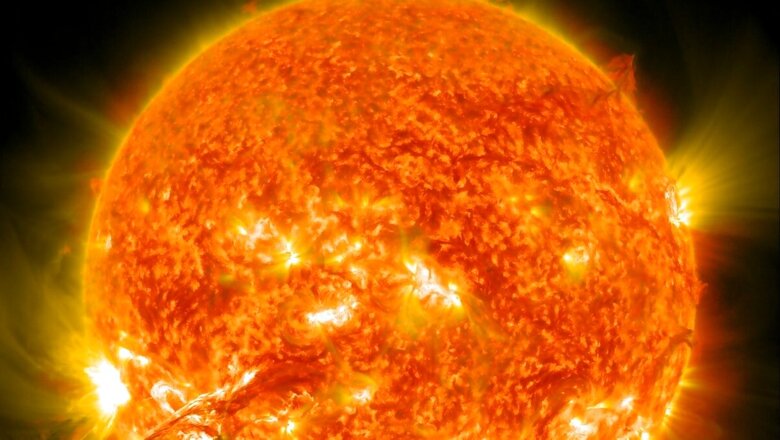
views
Space weather is about to get worse as space weather forecasters warned of a likely geomagnetic storm on Tuesday. They predicted that a coronal mass ejection (CME) from the Sun could graze Earth’s magnetic field leading to geomagnetic storms.
The CME was produced by X1-M7 double solar flare which was powerful in nature. Two CMEs were launched almost simultaneously making forecasting harder. CMEs are large expulsions of plasma and magnetic fields from the Sun’s corona.
CMEs consist of plasma (electrically charged particles) and a magnetic field structure and travel through space at high velocities.
The recent extreme space weather is linked to active sunspot regions as the Sun nears the peak of its 11-year cycle, called the solar maximum.
Although this weekend’s solar storm is anticipated to be milder than the extreme G5 geomagnetic conditions caused by the powerful CMEs that impacted Earth from May 10 to 13, more such events are likely as the Sun enters the most turbulent phase of its cycle.
“While the CME is not expected to deliver a direct hit, its glancing blow could still spark moderate geomagnetic storming around June 4th,” the National Oceanic and Atmospheric Administration’s (NOAA) space weather forecaster Dr. Michelle Viglione said, according to a report by India Today.
The CMEs take 1-3 days to reach Earth after being hurled from the Sun. When CMEs reach Earth, they can interact with the Earth’s magnetic field, potentially causing geomagnetic storms. These interactions often produce spectacular auroras, commonly known as the Northern and Southern Lights (Aurora Borealis and Aurora Australis, respectively).
However, they also can negatively affect telecommunications. Strong geomagnetic storms can disrupt satellite operations, communication systems, power grids and navigation systems.
“We’re looking at likely communications degradation for aircraft and satellite operators, potential issues with GPS and other navigation systems, and auroral displays visible across higher latitudes. Utilities are also being advised to watch for possible induced currents affecting power grids,” Dr. Viglione further added.
Fans of auroras will look forward to possible light displays at higher latitudes caused by the incoming solar storm’s impact on Earth’s upper atmosphere.


















Comments
0 comment